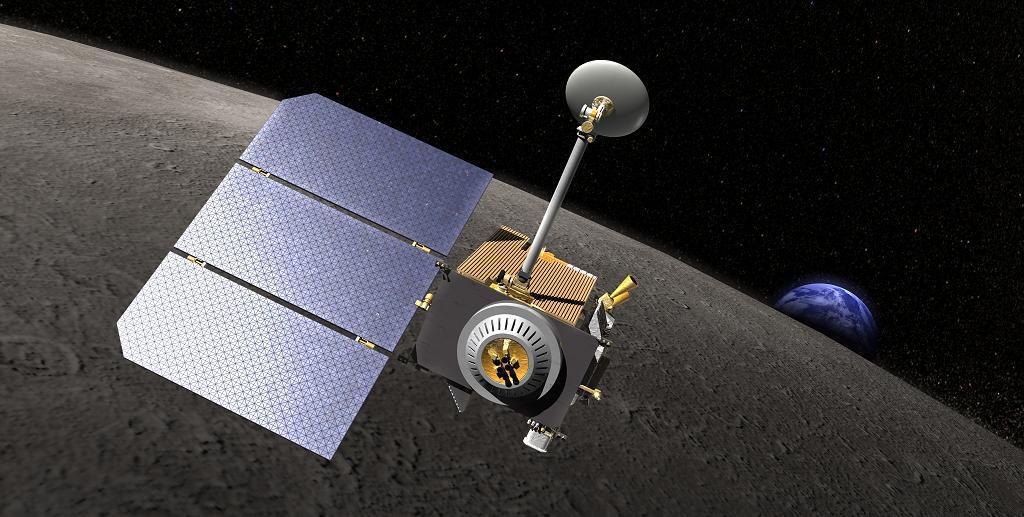
Artist's concept of LRO at the Moon.
NASA's Lunar Reconnaissance Orbiter has been observing the Moon with powerful cameras since 2009.
As our nearest neighbor, the moon is a natural laboratory for investigating fundamental questions about the origin and evolution of the Earth and the solar system. Lunar Reconnaissance Orbiter (LRO) brought the our the Moon back into the public eye.
LRO is a robotic mission that set out to map the moon's surface and, after a year of exploration, was extended with a unique set of science objectives. LRO observations have enabled numerous groundbreaking discoveries, creating a new picture of the moon as a dynamic and complex body. These developments have set up a scientific framework through which to challenge and improve our understanding of processes throughout the solar system.
LRO and the Lunar CRater Observation and Sensing Satellite (LCROSS) were launched on an Atlas V rocket on June 18, 2009, beginning a four-day trip to the moon. LRO spent its first three years in a low polar orbit collecting detailed information about the moon and its environment. After this initial orbit, LRO transitioned to a stable elliptical orbit, passing low over the lunar south pole. With a suite of seven powerful instruments, LRO has collected a treasure trove of data, making an invaluable contribution to our knowledge about the moon.
For more information, visit NASA's Lunar Reconnaissance Orbiter homepage ›
